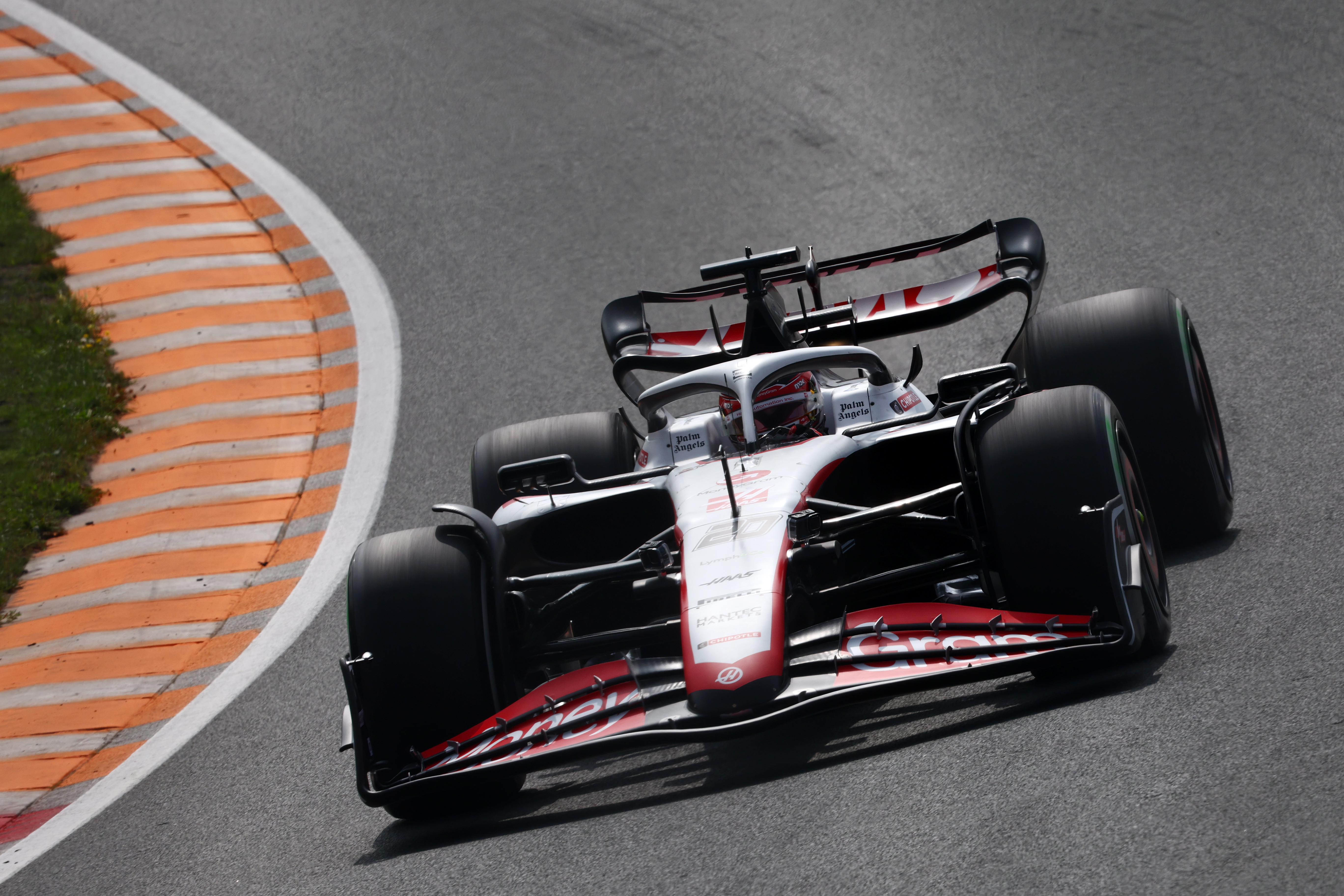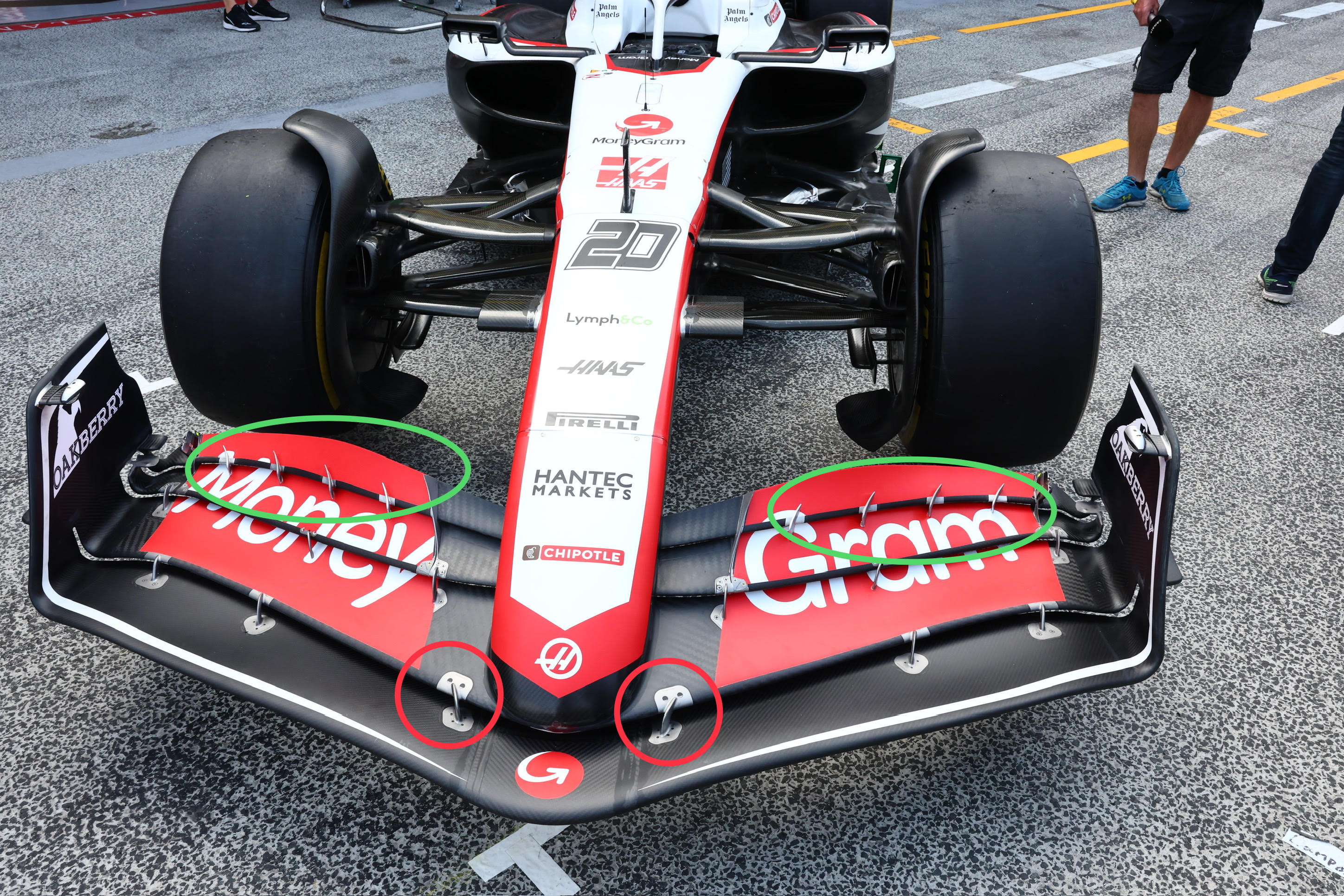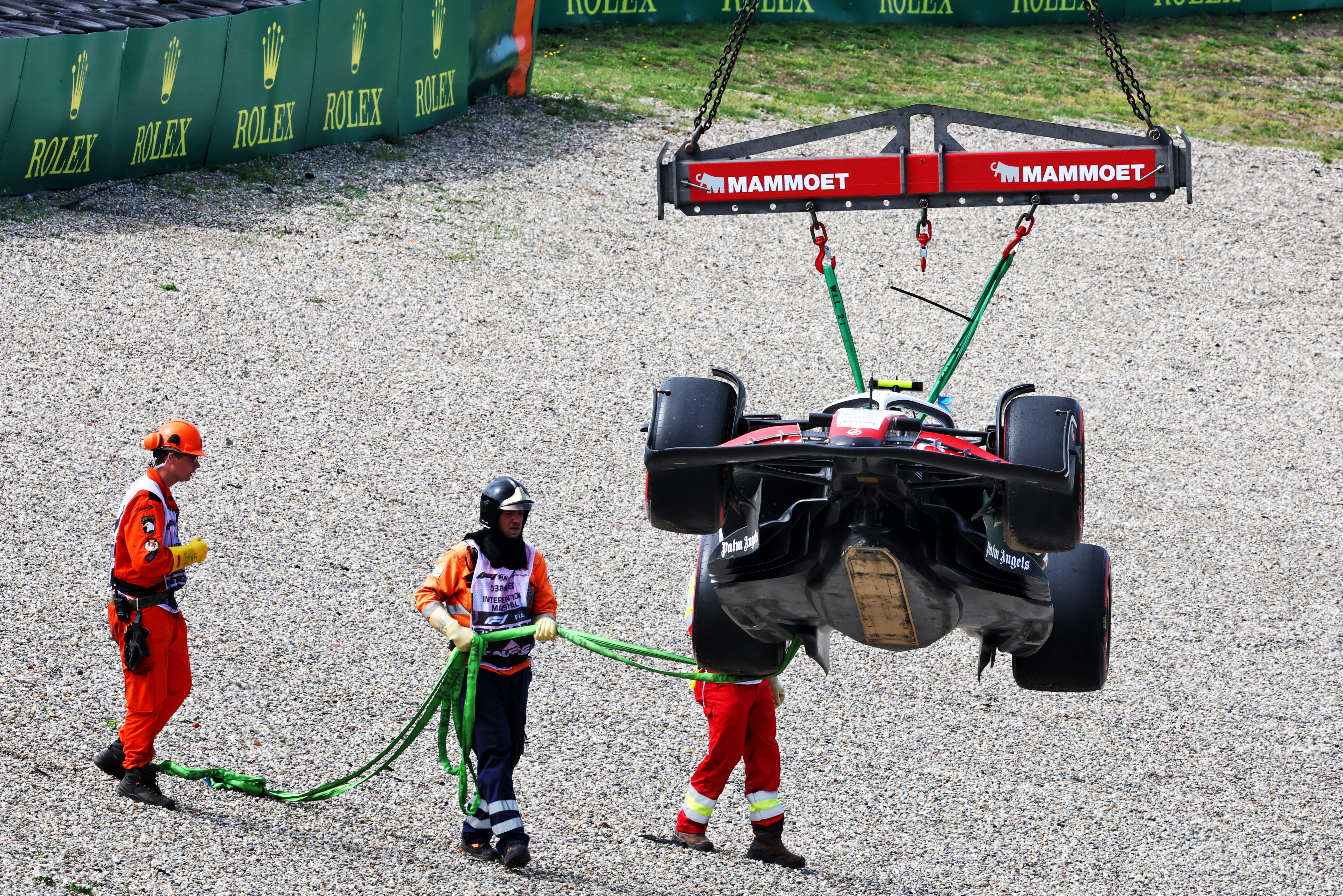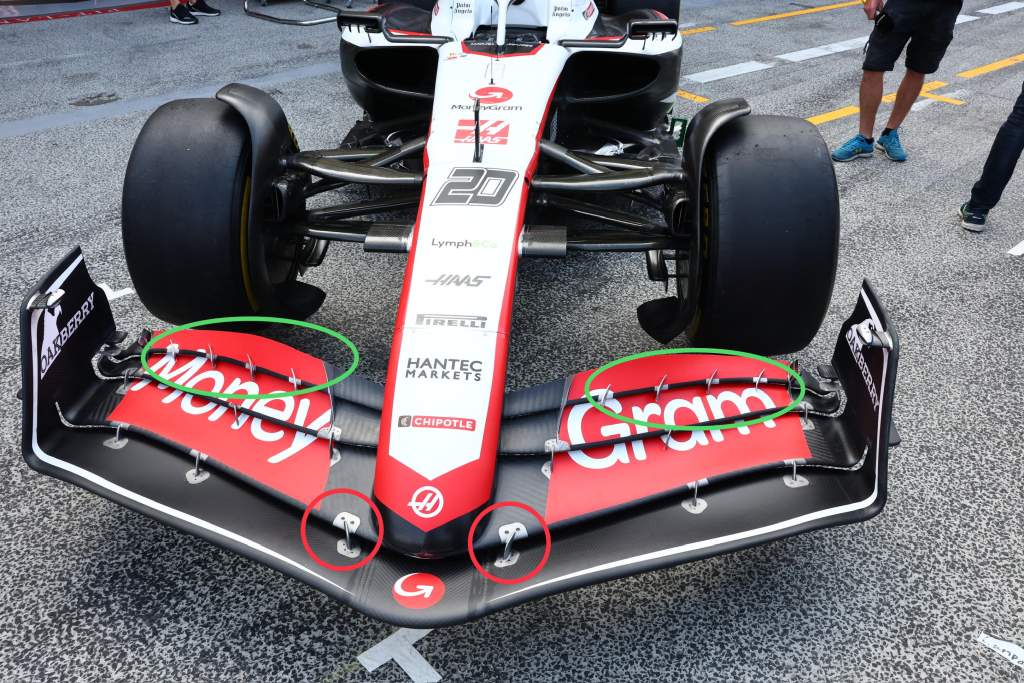Up Next

Haas’s 2023 Formula 1 season so far has been one of strong qualifying performances and poor race performances thanks to its car overworking its tyres, but it’s hoped that the upgrade package introduced for the Dutch Grand Prix at Zandvoort will tackle this weakness.
Haas has brought a modified front wing/nose assembly to Zandvoort as well as modified rear brake ducts, which “has been improved with new internal ducts shape” to improve heat dissipation.
At best it will only be a step in the right direction, with team principal Guenther Steiner indicating “this is not a solution” to the problem. But he did indicate that “it helps us to show which direction to go in”.
The front wing is aimed at improving consistency, which could potentially contribute to improving the tyre management. But the team has stressed that this is a separate development focused on improving car characteristics.
“We’re bringing two different upgrades,” Haas aero performance group team leader Stefano Chiazza told The Race. “We’re bringing a new front wing and a new set of rear corners.
“When it comes to the front wing, we have worked on the reprofiling of our elements, the whole span of the wing. The main target has been to improve car consistency. It has been one of our main challenges since the season started and we hope that this will be a step forward.
“In the corner, we haven’t changed that much of the topology or the concept but we hope that it will go in the direction of helping us with tyre management. So let’s see how it goes.”

Haas is running experiments with both the new (pictured above) and old-specification parts to boost its understanding and validate the direction it takes in the future.
While the brake duct change will improve the heat dissipation and therefore should reduce the overheating problems, the front wing change is expected to have multiple benefits. It’s aimed at improving “consistency” and “driveability” rather than offering an increase in peak downforce.
“There are many things,” said Chiazza on the aims of the new front wing. “Our drivers have been complaining a lot about the response of this car in traffic conditions and also whenever there are strong winds the car becomes difficult or tricky to drive.
“It’s not very easy to find a concrete answer but with this front wing we aim at improving the car characteristics in terms of balance delivery, so high speed to low speed migration and so on.
The purpose is to improve the car handling rather than maximising the peak.”
GARY ANDERSON SAYS

It’s what’s said in the last couple of paragraphs above that Haas needs to focus on: getting a consistent balance or, if possible, a balance that shifts slightly rearward with speed is what these cars require.
If the underbody centre of pressure shifts forward, you will need to have a front wing assembly that compensates for that.
This is not necessarily the correct solution, it is more of a bandage. As we have often seen, some teams design the front wing to back off as the load increases with speed. However the FIA seems to be stepping in and looking more closely at this than it did in the early part of the season and perhaps that is part of what Haas is reacting to.
As for the updated Haas front wing, we can compare that to its previous version, which has also been run at Zandvoort as both drivers back-to-backed the two wing specs in FP1.

On the new wing, Haas has gone for a more uniform trailing edge profile. This is very similar to the norm of the frontrunning cars like Red Bull, Ferrari and McLaren.
I have never been a fan of quick changes on the front wing profiles or trailing edge trim-line as it induces transverse flow across its span. With these ground effect cars and how critical the underfloor leading edge flow distribution is, this is the last thing you want.
As with the older version it has, the outwash separates between the last two flaps (green ellipse). These will be more powerful with this more benign trailing edge trim-line. As for the slot gap separators between the front two elements (red ellipse), this is a bit confusing; the flow coming through the slot gap between these two elements is normally used to improve the flow on the underside of the nose, which in turn improves the flow to the central part of the underfloor.
Better flow to this part of the underfloor leading edge improves the performance of the diffuser and in turn generates more downforce from the central part of the underfloor.
It is difficult to see much more of the detail. Haas says it has altered how the wing interacts with the nose, but again that could just be a stiffness thing.
From what we have seen and heard from FP1, it looks like the new front wing is a step in the wrong direction. Hulkenberg spun in Turn 7, so it looks like the centre of pressure is still moving forward with speed.

If Has has had to increase the stiffness of the assembly, it could be down to that. Backing off the wing angle will reduce its pointiness in fast corners, but unfortunately generate more understeer in slow and medium-speed corners.
When it comes to the changes to improve the heat dissipation from the rear brakes, it is all done within the rear wheels so it’s impossible to judge this from the outside as it’s all about internal changes. This change is not necessarily about more cooling, it’s about managing the internal cooling flow and keeping it away from the rear wheel rims, which in turn heats up the volume inside the tyre, increasing the tyre pressures and leading to reduced rear tyre grip – and with it earlier tyre degradation.
Rear brake cooling on these cars is quite complicated. Part of the rear retardation is through the energy recovery system (ERS) which charges up the battery pack, so you want to use that to its maximum. The other part of it is through the carbon-carbon rear brakes. To save weight these are smaller than would normally be required if all the retardation was through a normal braking system.
The ERS retardation comes in first when you don’t need excess braking and the actual carbon-carbon braking system comes in as an assistance when the pedal pressure requires maximum retardation. If you cool them too much, then when you need both working to their maximum there will be a delay in the carbon-carbon getting up to temperature. If you don’t cool them enough they will very quickly overheat.
We often see rear brake overheating problems if a driver has problems with the ERS retardation system.






